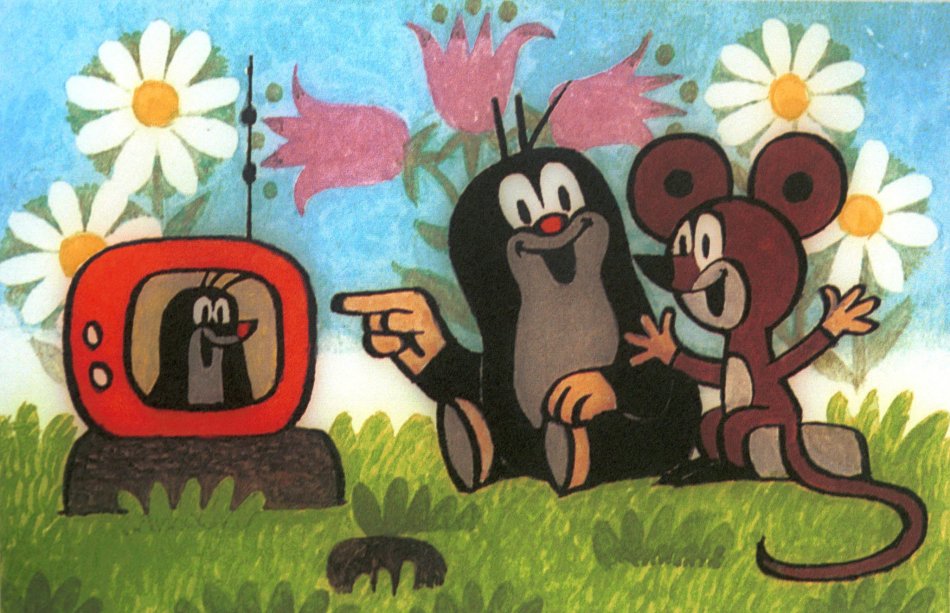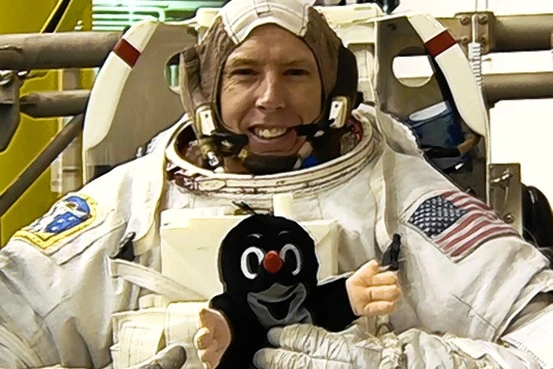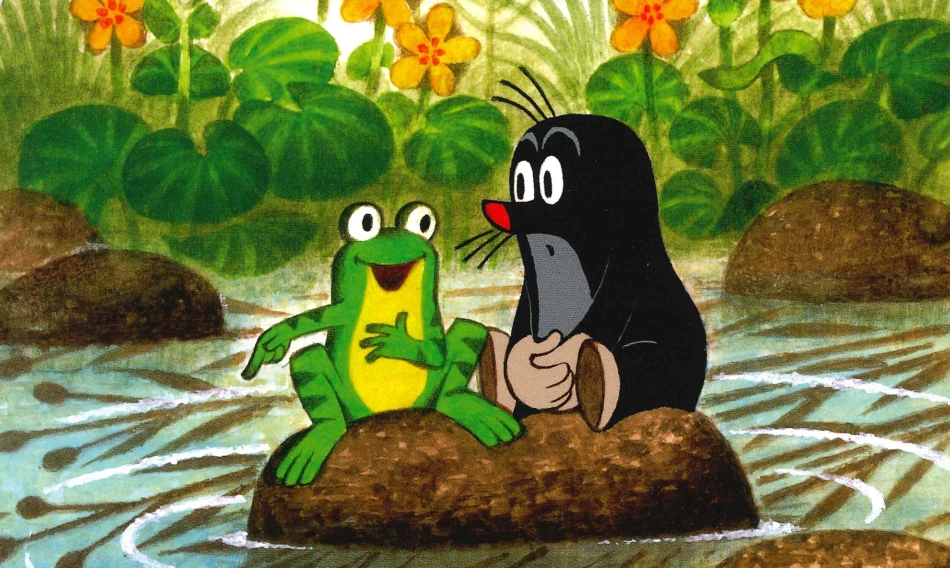Prague, Czech Republic – From winning over the hearts of people all over the world to participating on a mission to space, Krtek has done it all.
Krtek (Mole in Czech) is cartoon mole created by Czech animator Zděnek Miler and no stranger to those who have visited the Czech capital. In souvenir shops, on keychains, or as a stuffed toy – the grey-bellied, cheerful-looking little mole is all over the place.
The idea for Krtek came about when Miler wanted to create a cartoon that would explain children the processing of flax. Miler knew that he wanted a strong Disney influence by having an animal as the main character. He said that he got the idea while stumbling over a molehill during a walk.
Soon after its first release, Krtek was an instant hit. The first short film called “Jak krtek ke kalhotkám přišel” (“How the mole got his trousers”) received two Golden Lions at the 1957 Venice Film Festival.
How the mole got his design
Although the first episode was narrated, Miler decided against it in the following short films. He wanted Krtek to be understood by audiences all around the world.
For this reason, Krtek and other animal characters did not use words to communicate – except maybe for an occasional “ahoj” (“hello” in Czech). Instead, the cartoon animals displayed a range of sounds consisting mostly of giggles or non-figurative exclamations.

Another important feature of the cartoons was the music. Created by the Czech composer Vadim Petrov, the music was composed specifically to support the story-telling element of the cartoons that lacked speech.
A uniting theme of the cartoons was the curiosity with which Krtek approached the world around him, seeking to educate the children on various topics.
Some episodes dealt with serious topics like protection of the environment in the face of technological progress. The episode “Krtek ve městě” (“Krtek in the city”) portrayed the construction of a modern metropolis by the destruction of the local ecosystems from the perspective of Krtek and his animal friends.
How Krtek got to the stars
Six years after the festival in Venice, the next cartoon was created called “Krtek a autíčko” (“Krtek and a car”). Following the first film’s success, the cartoon gained increasing popularity all over the world.
The movies were particularly popular in Germany and other Central and Eastern European nations but also in countries like Japan or China. In total, over 50 short cartoons were made.
In 2011, the American astronaut Andrew Feustel took a stuffed Krtek toy with him on a space shuttle mission. In order to meet NASA requirements, the toy had to be altered and undergo specific tests.
Hearing about Feustel’s plan to send Krtek to space, Miler sent Feustel a signed copy of the book based on the 1965 episode “Krtek a raketa” (“Krtek and a rocket”).

How the mole got sold to China
After the fall of communism, Krtek also proved to be a valuable trademark. Following Miler’s death, however, a legal battle emerged between relatives over the rights to the little mole.
In 2014, Miler’s granddaughter signed an agreement with the Chinese television CCTV to shoot new episodes of the cartoon. Five years later, the High Court in Prague ruled that she does not hold the rights to the license, putting an end to the long-running legal dispute.
While the new episodes of the Czech-Chinese production called “Krtek and Panda” have sparked controversies in the country, fans of the original Krtek couldn’t care less about the poor and politicized quality of the Chinese production.
Instead, what is crystal clear is that Miler managed to strike a timeless chord with Krtek’s original design, which has kept its popularity across different cultures and generations for more than six decades.
By Matej Voda
Matej Voda writes about democratic backsliding, popular culture, and disinformation. He is based in Prague. You can also find him on Twitter.

Pingback: Czech man in hospital after trying to blow up garden mole
Pingback: After Krtek, beloved Czech puppet Hurvínek to fly to space
Pingback: Katja suosittelee: Prahan TOP10 | Ankkatohtorin lokikirja
Pingback: After Krtek, beloved Czech puppet Hurvínek to fly to space – Kafkadesk
Pingback: Czech man in hospital after trying to blow up garden mole – Kafkadesk
Pingback: Pavel Čanda: A life and work between Czechoslovakia and France – Kafkadesk